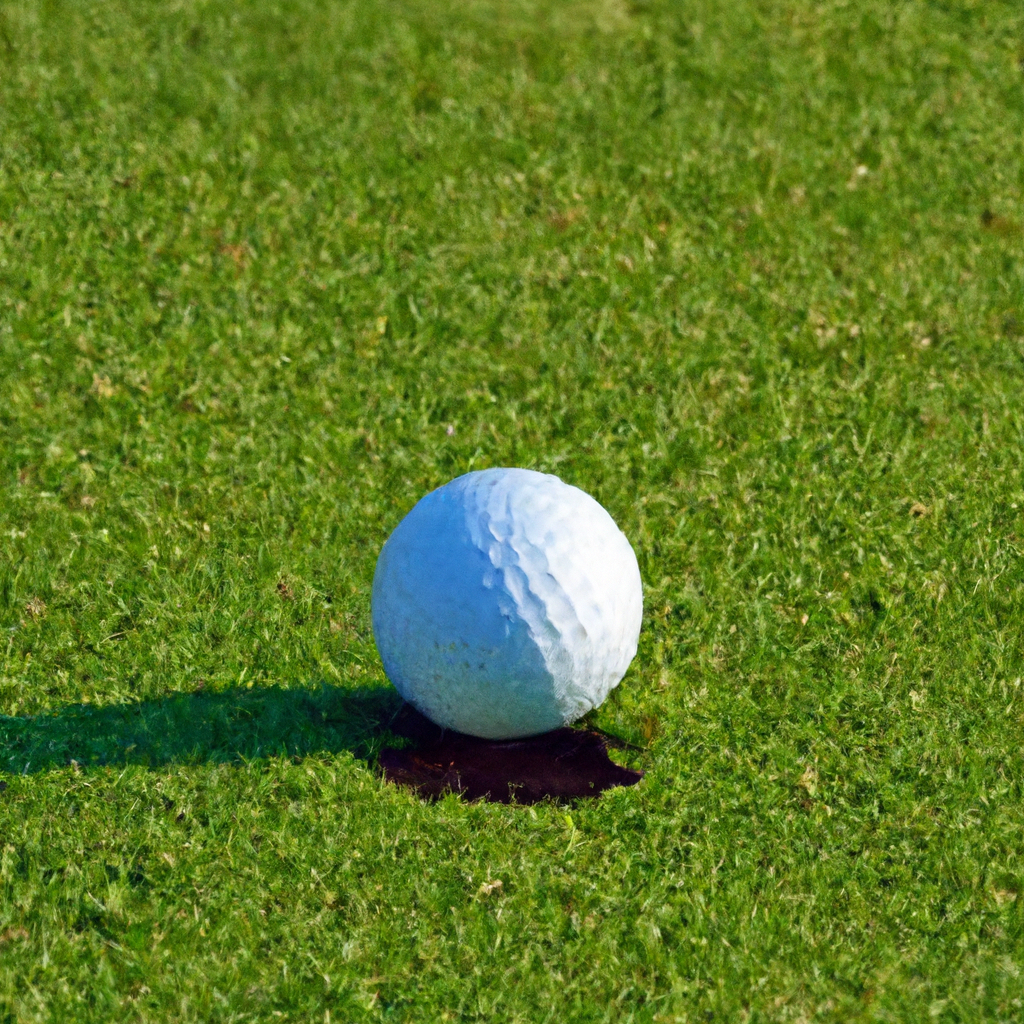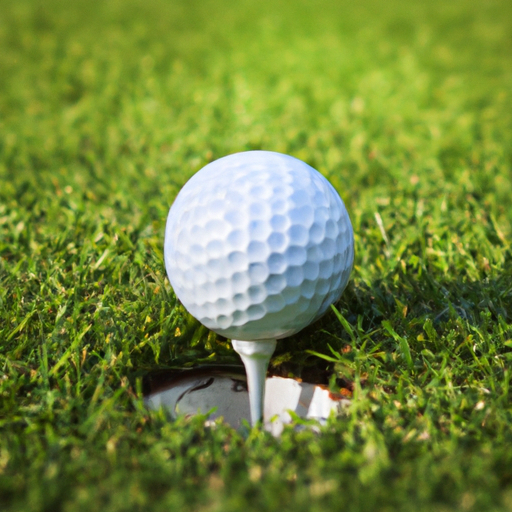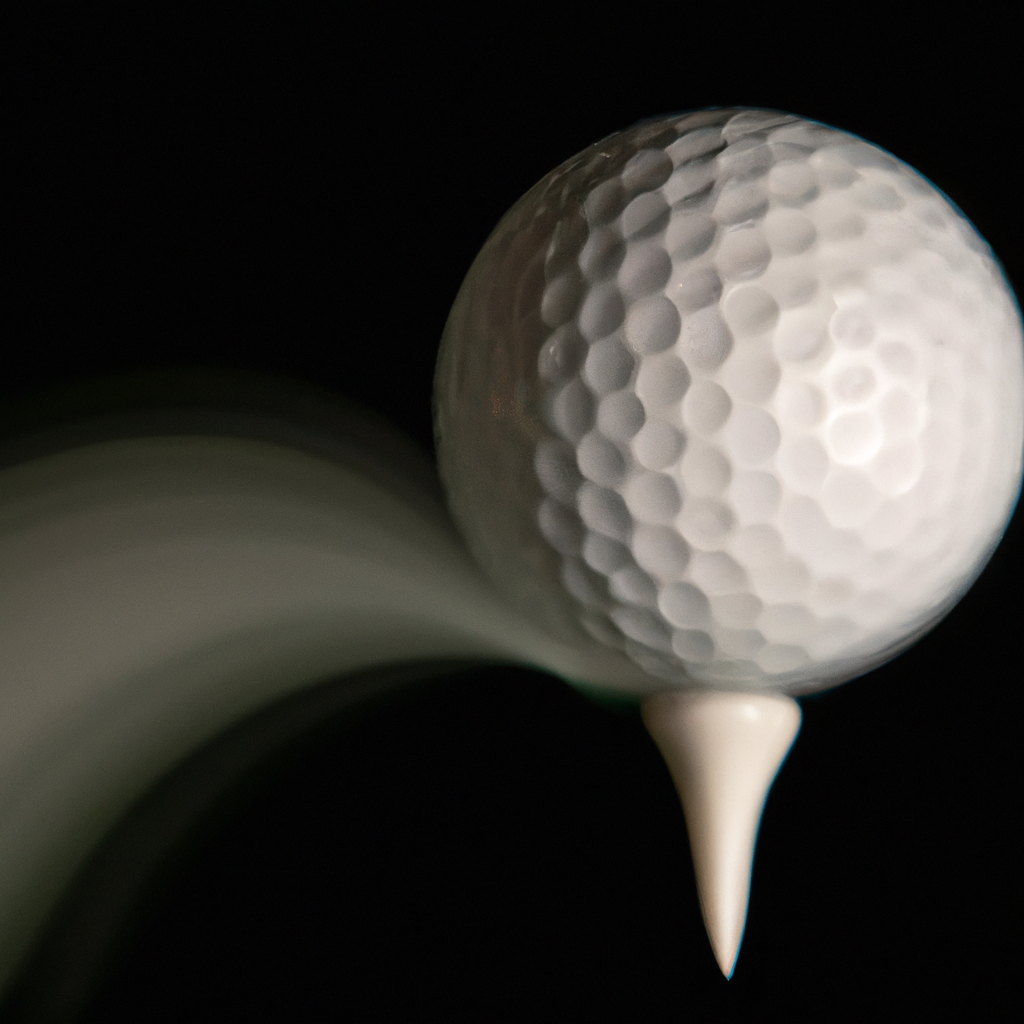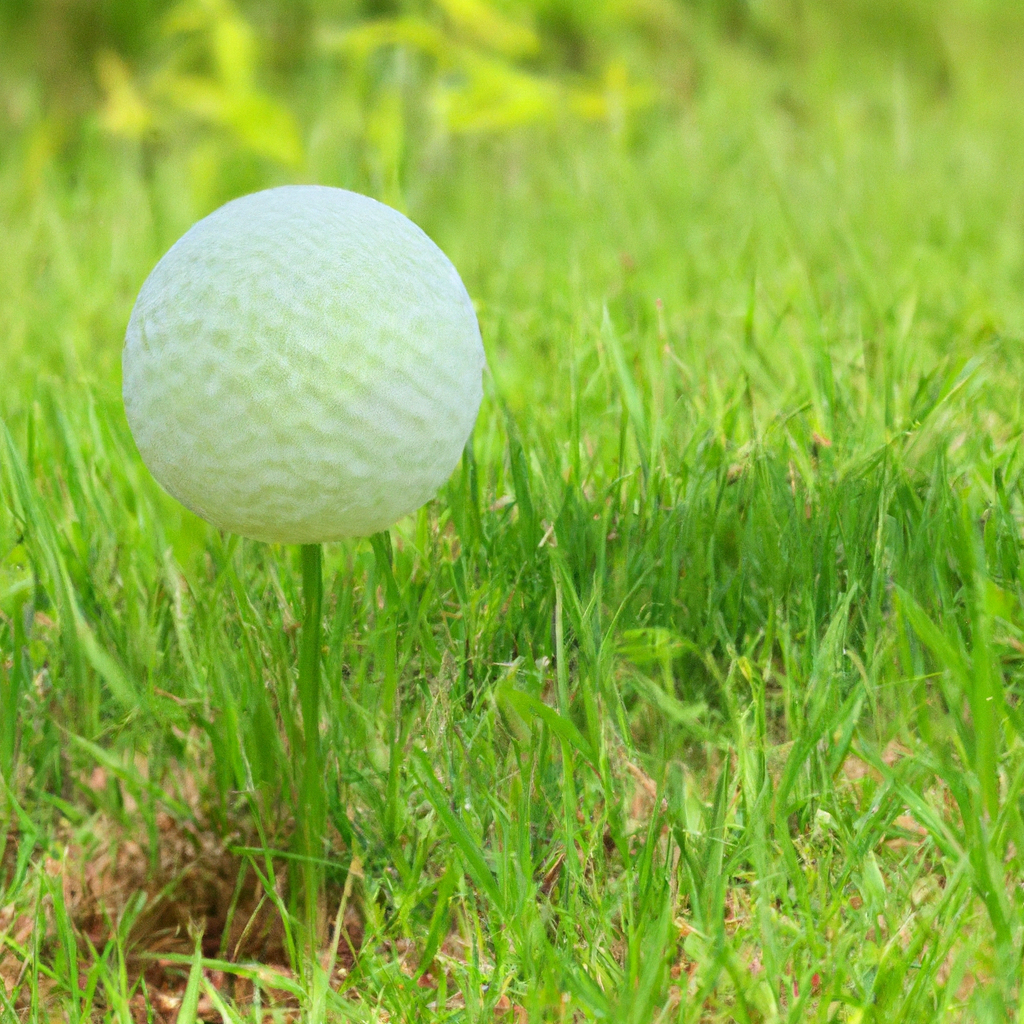Are you looking to add that extra finesse to your golf game? Look no further than “Mastering the Backspin: A Guide to Putting Spin on a Golf Ball.” This article will provide you with valuable insights and techniques on how to effortlessly put a backspin on a golf ball, elevating your game to new heights. Whether you’re a beginner or a seasoned pro, this guide will equip you with the knowledge and skills needed to achieve that desired spin and impress your fellow golfers. Prepare to take your golf game to a whole new level as we uncover the secrets behind the elusive backspin.

Understanding Backspin in Golf
In the world of golf, backspin is a term that is frequently used and desired by players of all skill levels. It refers to the phenomenon of the golf ball spinning backward upon impact with the clubface and the subsequent lift it generates. Backspin is crucial in the game of golf as it plays a significant role in controlling the distance, trajectory, and stopping power of the ball. By understanding the concept of backspin and how to generate it, you can elevate your golf game to new heights.
Definition of Backspin
Backspin, also known as topspin or underspin, refers to the rotational motion of the golf ball that causes it to spin along its vertical axis, creating an upward force. This upward force counteracts the force of gravity, allowing the ball to stay in the air for a longer duration and providing increased control over its trajectory. When backspin is applied correctly, it can cause the ball to stop quickly upon landing, giving golfers the ability to place shots strategically on the green.

Importance of Backspin in Golf
Backspin is crucial in golf for a multitude of reasons. Firstly, it allows players to control the distance that the ball travels. By applying backspin, golfers can increase the ball’s hang time and reduce overall roll, resulting in a shorter distance traveled. This precision is especially valuable in situations where getting as close to the pin as possible is essential, such as approach shots.
Furthermore, backspin plays a significant role in the trajectory of the ball. By imparting backspin, players can achieve a higher launch angle, enabling them to clear obstacles such as trees or bunkers and land the ball softly on the green.
Lastly, backspin gives golfers the ability to stop the ball quickly upon landing. This is particularly advantageous in situations where the green is firm or sloped, making it challenging to keep the ball from rolling away from the target. By delivering an adequate amount of backspin, players can increase the ball’s spin-induced drag, allowing it to grip the green upon impact and come to a halt more swiftly.
Factors Affecting Backspin
Several factors come into play when it comes to generating backspin on a golf ball. Understanding and optimizing these factors can greatly enhance your ability to achieve the desired spin.
Proper Grip and Setup
Having a solid grip and correct setup is crucial in generating backspin. Ensure that your grip pressure is firm but not overly tight. A loose grip can lead to a loss of control, while a grip that is too tight can restrict the natural hinging action of your wrists, hindering the generation of backspin.
Additionally, proper alignment and stance are essential. Align yourself parallel to the target line to ensure a consistent swing path and contact with the ball. A well-balanced and stable stance will provide a solid foundation for generating backspin.
Choosing the Right Golf Ball
The type of golf ball you use can have a significant impact on your ability to generate backspin. Golf balls with a urethane cover are known to offer greater spin potential due to their softer texture and increased friction with the clubface. Consider experimenting with different brands and models to find the one that suits your playing style and spin requirements.
Mastering the Backswing
A solid backswing is crucial for generating backspin. Ensure that you maintain a relaxed grip throughout the swing, allowing for proper wrist hinge and release. Tension in the hands and forearms can minimize the clubhead speed and hinder the generation of backspin.
Focus on creating lag in your swing by delaying the release of your wrists until the last possible moment. This lag stores energy in the club, which is then delivered to the ball upon impact, generating backspin and power.
The Key to Achieving Backspin
Several factors are essential to achieving optimal backspin on your shots.
Finding the Optimal Angle of Attack
The angle at which the clubhead strikes the ball greatly affects the amount of backspin generated. To maximize backspin, it is crucial to strike the ball with a slightly descending blow, known as the optimal angle of attack. This ensures that the clubface compresses the ball and imparts backspin as it rolls up the face.
Bottoming Out in Front of the Ball
To generate backspin, the clubhead should strike the turf slightly in front of the ball, allowing for a clean and crisp contact. Hitting the ground before the ball can cause chunks or thin shots, drastically reducing the ability to generate backspin.
Positioning the Hands at Impact
The positioning of your hands at the moment of impact can have a significant impact on the amount of backspin generated. To optimize backspin, ensure that your hands are slightly ahead of the ball at impact, creating a downward strike and increased compression.
Types of Golf Shots for Backspin
Different golf shots require varying amounts of backspin depending on the desired outcome. Here are a few common shots and how backspin plays a role in their execution.
Pitch Shots
Pitch shots are typically played from a shorter distance and require a higher degree of backspin. By imparting backspin on a pitch shot, you can control the ball’s stopping power and maintain accuracy. It is essential to strike the ball cleanly while maintaining the optimal angle of attack.
Chip Shots
Chip shots are utilized when you are close to the green but not yet on it. These shots require less backspin compared to pitch shots, as the primary goal is to control the rollout of the ball upon landing. By controlling the backspin, you can ensure that the ball lands softly and stops promptly after hitting the green.
Approach Shots
Approach shots are usually played from a longer distance and require a balance between backspin and distance control. The goal is to achieve a high launch angle with ample backspin to stop the ball on the green. By adjusting the angle of attack and the amount of backspin, you can land the ball safely on the green and control its forward roll.
Techniques for Generating Backspin
Achieving optimal backspin requires a combination of various techniques and adjustments to your swing. Here are some fundamental techniques to help you generate backspin consistently.
Open the Clubface
Open the clubface slightly at address and throughout the swing. This adjustment increases the loft of the club, promoting a higher launch angle and increased backspin potential.
Accelerating Through Impact
Maintain a smooth and accelerating swing tempo, with a focus on an aggressive release through impact. Increasing clubhead speed through impact can enhance backspin by maximizing the compression and spin created.
Brushing the Ball
To generate backspin, aim to brush the ball with the clubface rather than striking it aggressively. This delicate touch creates increased friction between the ball and clubface, leading to a greater spin effect.
Understanding Spin Loft
Spin loft is a crucial concept to grasp when aiming to achieve optimal backspin. It refers to the difference between the dynamic loft, which is the loft of the clubface at impact, and the angle of attack, which is the downward or upward motion of the clubhead at impact.
Definition of Spin Loft
Spin loft is the difference between the dynamic loft and the angle of attack. The dynamic loft represents the actual loft on the clubface at impact, while the angle of attack depicts the direction and steepness of the clubhead’s motion during the swing.
How Spin Loft Affects Backspin
Spin loft plays a crucial role in generating backspin. A smaller spin loft results in a higher launch angle and increased backspin, while a larger spin loft tends to decrease the launch angle and backspin. By understanding the relationship between spin loft, launch angle, and backspin, you can make the necessary adjustments to achieve the desired amount of spin on your shots.
Optimizing Spin Loft
To optimize spin loft, you must find the ideal balance between the dynamic loft and angle of attack. Experiment with different combinations and monitor the resulting launch angle and amount of backspin. By fine-tuning and adjusting these factors, you can find the perfect spin loft for your game.
Controlling Backspin
While generating backspin is crucial, being able to control it effectively is equally important. Here are some strategies to help you control backspin and tailor it to your specific needs.
Understanding Club Selection
Different clubs have varying degrees of loft and spin potential. Understanding the characteristics of each club and selecting the appropriate one for a given shot is key to controlling backspin. Higher lofted clubs, such as wedges, will generally provide more backspin compared to lower lofted irons and woods.
Adjusting Swing Speed
The speed at which you swing the club can significantly affect the amount of backspin generated. A higher swing speed can create more clubhead compression and spin, resulting in increased backspin. Conversely, a slower swing speed may yield less spin. Experiment with your swing speed to find the optimal balance for generating and controlling backspin.
Controlling Spin with Loft
The loft of the club plays a vital role in backspin control. By adjusting the loft of your club, you can fine-tune the amount of backspin generated. Lowering the loft will decrease backspin, while increasing the loft will promote more spin.
Practicing the Backspin Shot
As with any aspect of golf, practice is crucial in mastering the ability to generate backspin consistently. Here are some practice techniques to help you refine your backspin shot.
Using a Practice Green
Utilize a practice green to simulate real course conditions and focus on generating backspin. Experiment with different clubs, stances, and grips to understand how each adjustment affects the amount of backspin. Take note of the ball’s trajectory and stopping power to gauge your progress.
Experimenting with Different Clubs
Different clubs can produce varying levels of backspin due to their lofts and design. Experiment with different clubs to understand their individual spin characteristics. By becoming familiar with the distinct properties of each club, you can make better-informed decisions on the course to achieve your desired backspin.
Recording and Analyzing Results
Keep a record of your practice sessions and on-course shots to analyze your progress. Note the club used, swing speed, spin loft, and the resulting backspin. By identifying patterns and trends, you can make informed adjustments and track your improvement over time.
Tips and Tricks for Backspin
Here are some additional tips and tricks to help you maximize your backspin potential.
Understanding Green Conditions
Each golf course and even individual greens can vary in terms of firmness and speed. Take the time to assess the grass and evaluate its conditions to better gauge the required amount of backspin. Adapt your club selection, swing speed, and technique to optimize backspin performance based on the specific green conditions.
Utilizing Backstop Features
Take advantage of natural backstop features on the green, such as slopes or mounds. By strategically landing the ball on these features, you can utilize the backspin to control its roll and bring it closer to the pin. Analyze the layout of the green and identify areas where backspin can be optimally utilized.
Analyzing Ball Position
The position of the ball in your stance can significantly impact the amount of backspin generated. By moving the ball slightly forward or backward in your stance, you can adjust the angle of attack and influence the launch angle and backspin. Experiment with different ball positions to find the optimal placement for generating backspin.
In conclusion, mastering backspin in golf is a skill that requires understanding, practice, and experimentation. By comprehending the principles behind backspin and implementing the techniques outlined in this guide, you can put spin on a golf ball with confidence and precision. Remember to always practice and refine your skills, as backspin can be a valuable tool in taking your golf game to the next level.






